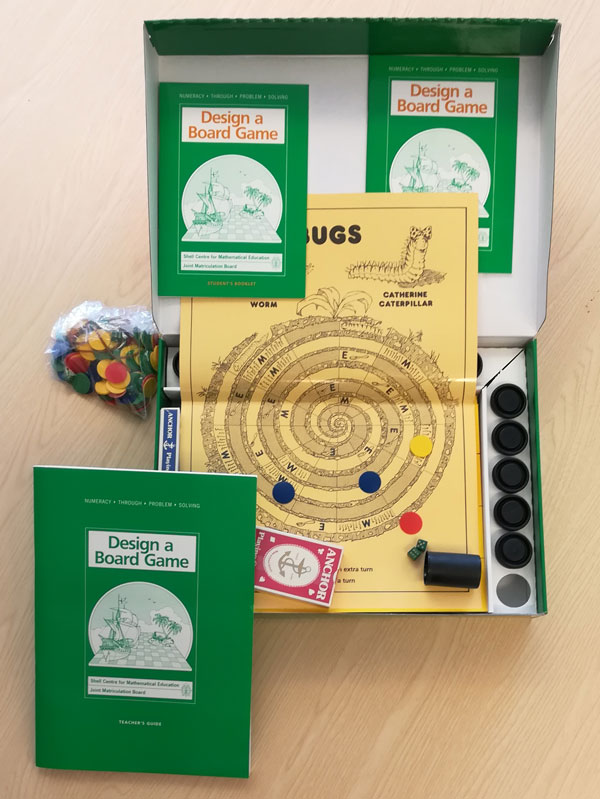30 Design Strategies and Tactics from 40 Years of Investigation
Appendix: Further information and examples
Exams on projects
When you set out to assess non-routine performances, a core question is, in various forms: “How non-routine? How unfamiliar the task? How far from what we have been taught and practised?” This non-routine-ness is sometimes called “transfer distance”. It is a central factor in how difficult a task is for a student. Further, particularly with real world modelling tasks, different student's prior experience will affect the transfer distance for them.

Link to materials
One approach to mitigating this problem (nothing is perfect) is to ensure all students have a common prior experience; this allows the task designer to control the transfer distance. The Numeracy through Problem Solving project, a joint enterprise between the Shell Centre and the Joint Matriculation Board (JMB, now AQA), devised a scheme of assessment that uses this approach.
There are five modules: Design a Board Game, Produce a Quiz Show, Plan a Trip, Be a Paper Engineer, Be a Shrewd Chooser. Each is designed to take between 10 and 20 hours to complete. Each module provides a theme within which the students take responsibility for planning, organizing or designing. They are based around the everyday interests of most students. Students work both individually and in groups, choosing which areas of mathematics to deploy in tackling the problems. They also implement the results of their own decisions - a vital educational experience! The materials can be downloaded from the Shell Centre Publications website.
Two kinds of assessment were provided. Formative assessment, built into the teaching materials, is designed to check that each student in a group understands all aspects of the work, not simply those for which they have been responsible. Basic level could be awarded by the teacher on this basis alone.
The examination board offered a final exam to assess how well students could transfer what they have learned to more, or less closely related problem situations. There were two levels of increasing transfer distance:
- Standard Level presents non-routine problems to solve in the same context as the module.
- Extension Level presents problems, with similar underlying structure as those in the module, in other real world contexts.
(Modeling exams with advance background reading is another approach to this issue)
Links to materials:
- Numeracy Through Problem Solving
- https://www.mathshell.com/materials.php?series=numeracy, board_game_small.jpg